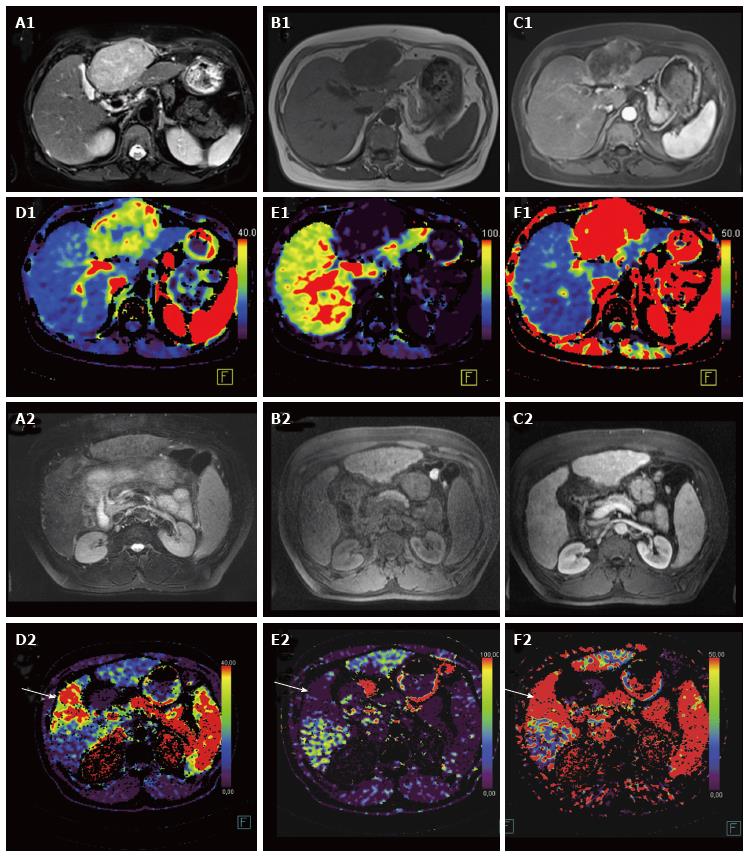Copyright
©The Author(s) 2016.
World J Radiol. Jul 28, 2016; 8(7): 683-692
Published online Jul 28, 2016. doi: 10.4329/wjr.v8.i7.683
Published online Jul 28, 2016. doi: 10.4329/wjr.v8.i7.683
Figure 1 “Typical” hepatocellular carcinoma lesion with typical pattern on volume perfusion computed tomography and magnetic resonance imaging and hepatocellular carcinoma with “atypical” magnetic resonance pattern.
MR depicts a typical pattern with hyperintense signal in T2 weighted image (A1) and low signal in T1 weighted image (B1) in combination with a strong arterial wash in (C1). (D1) Strong arterial blood supply of the lesion (ALP 58 mL/100 mL per minute) was found in combination with a Drop-out of portal venous perfusion (PVP 3 mL/100 mL per minute) (E1). Accordingly hepatic perfusion index (HPI) was high (96%) (F1). The lesion has an infiltrative growth pattern and is isointense in T2 weighted images (A2) and T1 weighted images (B2). The arterial phase on MRI does not depict a clear wash-in (C2). However VPCT depicts strong arterial blood supply of the lesion (D2) (ALP 53 mL/100 mL per minute) in combination with drop-out of portal venous perfusion (E2) (PVP 2 mL/100 mL per minute). The resulting HPI is 97% (F2). VPCT: Volume perfusion computed tomography; ALP: Arterial liver perfusion; PVP: Portal venous perfusion; MRI: Magnetic resonance imaging; HPI: Hepatic perfusion index.
- Citation: Grözinger G, Bitzer M, Syha R, Ketelsen D, Nikolaou K, Lauer U, Horger M. Correlation of magnetic resonance signal characteristics and perfusion parameters assessed by volume perfusion computed tomography in hepatocellular carcinoma: Impact on lesion characterization. World J Radiol 2016; 8(7): 683-692
- URL: https://www.wjgnet.com/1949-8470/full/v8/i7/683.htm
- DOI: https://dx.doi.org/10.4329/wjr.v8.i7.683









